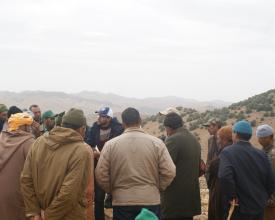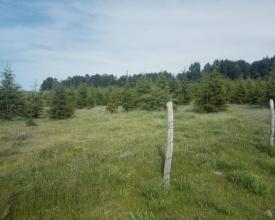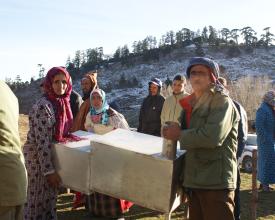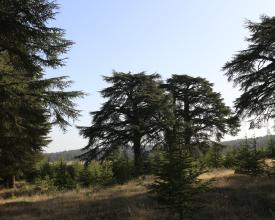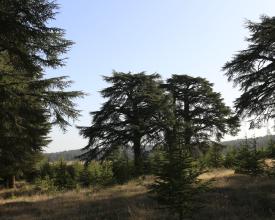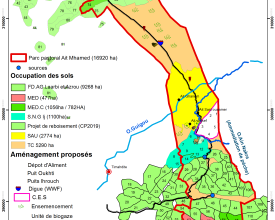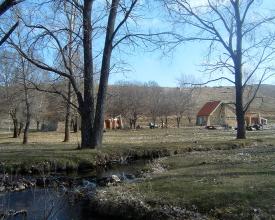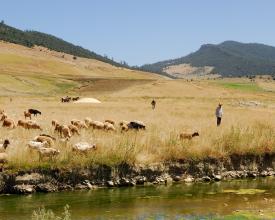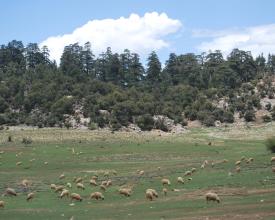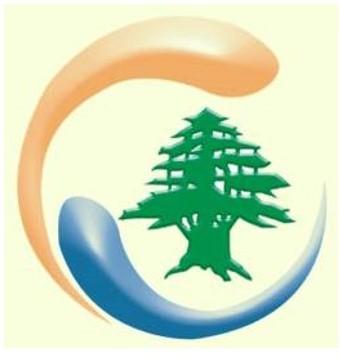
Compensation for set-asides for Atlas Cedar regeneration
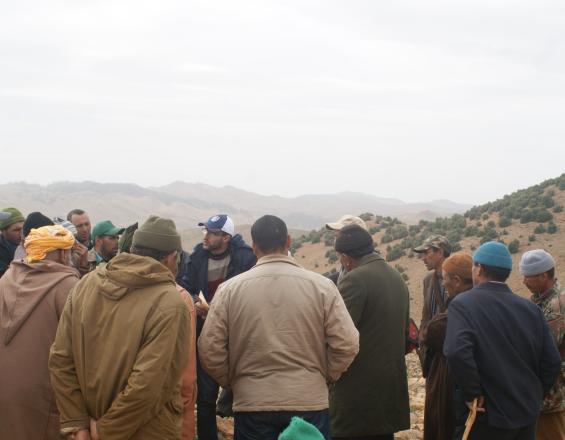
The regeneration of Atlas cedar is very sensitive to grazing due to extensive stockbreeding, if not impossible. Regeneration has to be protected and farmers organized into associations have to be compensated for areas that are off-limits to grazing. A legislative text on the subject was therefore drafted. Compensation is provided with 250MAD/ha/year (soon 1000MAD), to be financed by the association in the form of development actions on its Pastoral Park in consultation with the water and forestry department.
Thanks to the Ifrane National Park, stockbreeders are currently organized into ten associations comprising 1,127 stockbreeders who receive a total of 205,3750MAD. The regeneration of the cedar is evolving more and more. They are working together on income-generating projects involving ecotourism, rangeland management, agro-ecology, water, etc., with the involvement of young people and women, bearing in mind that the ultimate goal is the regeneration of the cedar and the conservation of its ecosystem.
Context
Challenges addressed
- Difficulty in regenerating the Atlas cedar ''Cedrus Atlantica'', an endangered species. This difficulty is exacerbated by climate change and human pressure;
- The demand for fodder from the extensive herds raised in the cedar forests by the forest's owners and users far exceeds the forest's fodder production. As a result, pastoral resources are over-exploited, spilling over into areas where grazing is forbidden (set-asides);
- The fact that pastoralists are not organized makes it difficult to raise awareness and implement a collective management model for pastoral resources, and/or to design integrated development projects together.
Location
Process
Summary of the process
The Ifrane National Park works to encourage stockbreeders to organize themselves into silvopastoral management associations in order to receive compensation for grazing on set-asides, which is prohibited by law. Once organized, they receive annual indemnities and invest them in infrastructure and equipment for livestock rearing and the purchase of cattle feed. Training and awareness-raising workshops are organized for these associations. All of this has led to the installation of a rotation system that helps to revitalize the pastoral potential of the rangelands, while respecting the set-asides, and thus achieve the objectives of the reforestation and regeneration programs initiated by the Department of Water and Forests for the Atlas Cedar.
In addition, the organization of the association has enabled consultation on integrated development projects generating sustainable income for all the inhabitants (breeders, young people, women, etc.), focusing on the enhancement of natural resources through ecotourism, the organization of grazing lands, agroecology.... etc.
Building Blocks
Financial incentives
The Department of Water and Forests manages forest resources through its decentralized structures, which are responsible for monitoring and applying reforestation and silviculture techniques. The regeneration of native species, in particular Cedrus Atlantica, is one of the most difficult tasks to achieve. The prohibition of grazing on plots of land designated as "closed" is a technique applied to ensure the success of cedar regeneration, but it is difficult to get herders to respect it without mobilizing funds to compensate them for the closed areas.
However, it was essential to organize the farmers into associations, and to provide them with guidance and raise their awareness, so that they could adopt the concept of compensation and develop it in the long term. This is what the Ifrane National Park has done, and continues to do as one of its main missions.
Enabling factors
The Department of Water and Forests has been a legally recognized government body since 1913, operating within the framework of regulations established by the country in consultation with the beneficiaries. It receives funds and has the flexibility to establish agreements that frame development projects in partnership with stakeholders, civil society, cooperatives and associations......
Lesson learned
-Repression alone should not be relied upon to limit infringements of natural resource laws.
Involving rights-holders and stakeholders in debates on natural resource management helps to identify optimal solutions and make the right decisions.
-At first, herders found it difficult to organize themselves into associations, and they also tended to share the compensation they received and consume it directly. But with the assistance and guidance of Ifrane National Park, the compensation received is being invested in infrastructure, equipment and the purchase of cattle feed. Increasingly, the focus has shifted to the design of integrated development projects aimed at improving the incomes of those entitled to them, and restoring and conserving fragile ecosystems, including the endangered Atlas Cedar.
Organization of livestock breeders into silvopastoral management associations
Sheep farming is the main activity in the area. The number of livestock far exceeds the forage capacity of the forest rangelands. As a result, it is difficult to respect the parcels set aside for regeneration. However, the organization of livestock farmers into associations enables them to benefit from indemnities compensating them for the use of the cleared areas. This helps to regenerate the Atlas cedar, which is in danger of extinction.
Enabling factors
The compensation agreement is governed by a commitment from the associations to respect the set-asides for regeneration,
-The compensation received is invested in infrastructure and equipment for livestock rearing and the purchase of feed;
-The organizations enable us to plan integrated development projects that make the most of the natural resources of all the pastoral parks and involve all social categories, especially young people and women.
Lesson learned
There is a risk that the compensation received by the associations will be shared directly by the farmers, without the expected investments being made;
The herders themselves may serve as laborers to implement the actions contracted between the water and forestry department and the associations;
The associations need to be monitored and coached from the outset, so that they can grasp the concept of compensation and develop it into development projects.
Impacts
The solution has made it possible to:
- Organize herders into so-called sylvopastoral management associations (AGS), which facilitate advocacy and communication with other partners who are or could be involved with development projects in the related pastoral parks;
- Compensation received by the associations is invested in the development of their pastoral parks;
- Protected areas are respected and Cedar regeneration resumes its dynamic;
- Herders are increasingly aware of the importance of set-asides in the regeneration and reconstitution of ecosystems;
- The associations have become partners of Ifrane National Park in the various actions undertaken by the Park, other than breeding and grazing. In addition, a development project is currently being put together for the Ait M'hmmed pastoral park, which will serve as an inspirational model for other associations in their parks.
Beneficiaries
The direct beneficiaries are the members, who are mainly livestock breeders. But the projects initiated by the associations benefit all users of the pastoral park, especially women and young people.
Sustainable Development Goals
Story
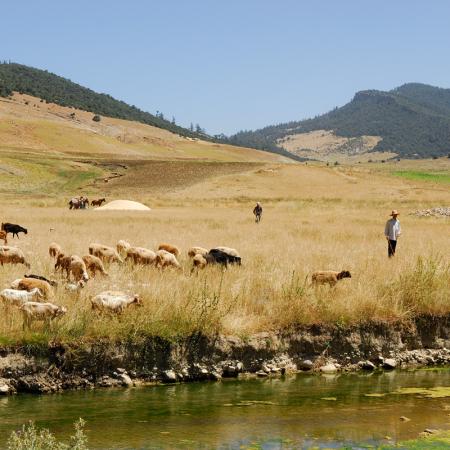
The reconstitution of the indigenous natural ecosystems of Ifrane National Park, in particular its emblematic, heritage and endangered species "Cedrus atlantica", has become increasingly difficult to achieve due to anthropic pressures such as overgrazing and the illicit cutting of cedar tree branches as livestock feed, in a lifestyle based on extensive livestock rearing and subsistence farming.These pressures are exacerbated by the negative impacts of climate change.
Prohibiting grazing on plots defined by forest management (mise en défens) is a technique that helps cedar regeneration, but is difficult to apply.
In 2009, the Ifrane National Park began organizing livestock breeders into sylvopastoral management associations. They receive compensation at the rate of 250MAD per Ha, in return for the ban on grazing. This has led to significant regeneration success (these indemnities will be increased to 1000MAD/ha under the new "Moroccan Forest 2020-2030" strategy).
In addition to investing these indemnities in developing the infrastructure of their pastoral parks, these organizations have helped to initiate dialogue on integrated development projects generating sustainable income for the benefit of all the inhabitants using the pastoral parks, around the enhancement of natural resources through ecotourism, the organization of rangelands, agroecology.... etc, while achieving the conservation and reconstitution of native species such as the endangered Cedrus Atlantica.
